Mike for the Marines
Designed specifically for the Marine Corps, the A-4M Skyhawk II variant was the ultimate American Scooter. Powered by the Pratt & Whitney J52-P408 turbojet engine, the Mike featured a larger canopy with improved visibility, a ribbon-type drag chute, and a squared-off vertical stabilizer with identification friend or foe (IFF) antennae mounted on top. The Skyhawk II entered service with VMA-324 Devildogs at MCAS Yuma in Arizona during April of 1971. Most of the A-4Ms later received improved generators to power all the upgraded electronics, including head-up displays (HUDs), enhanced ECM “black boxes”, and a nose-mounted laser spot tracking system.

The Super Fox
While A-4Fs continued to serve with Naval and Marine Corps Reserve squadrons, they were gradually being replaced, and demand for their services at the Navy’s Fighter Weapons School (TOP GUN) and elsewhere as adversary aircraft was on the rise. Adversary pilots had been imitating MiGs while flying Scooters for many years. The Super Fox was a triumph of fiscal responsibility.
These A-4Fs were equipped with the beefier J52-P408 engines, stripped of all extra weight, and turned into Hot Rod Tinker Toys. The jets were far less expensive to operate and maintain than the Phantoms and Tomcats, whose tails they regularly waxed during dissimilar air combat training (DACT). VF-43 Challengers, VF-45 Blackbirds, VF-101 Grim Reapers, VF-126 Bandits, VFC-12 Fighting Omars, VFC-13 Saints, and many more Composite squadrons used A-4Fs and some A-4Ms as stand-ins for MiGs.

The Scooter as a Fighter Redux?
The Israelis flew several different models of the Skyhawk series during several conflicts in the Middle East. They often found themselves taking on MiG-17s. They often found themselves losing to MiG-17s too, but more often to heavy and accurate anti-aircraft artillery (AAA) and surface-to-air missiles (SAMs). A-4 pilot Colonel Ezra Dotan used pod-fired air-to-ground rockets to down one MiG-17, and while yanking and banking down low with another MiG, he sawed a wing off another one with his 30 millimeter cannons, causing the MiG to meet its demise.
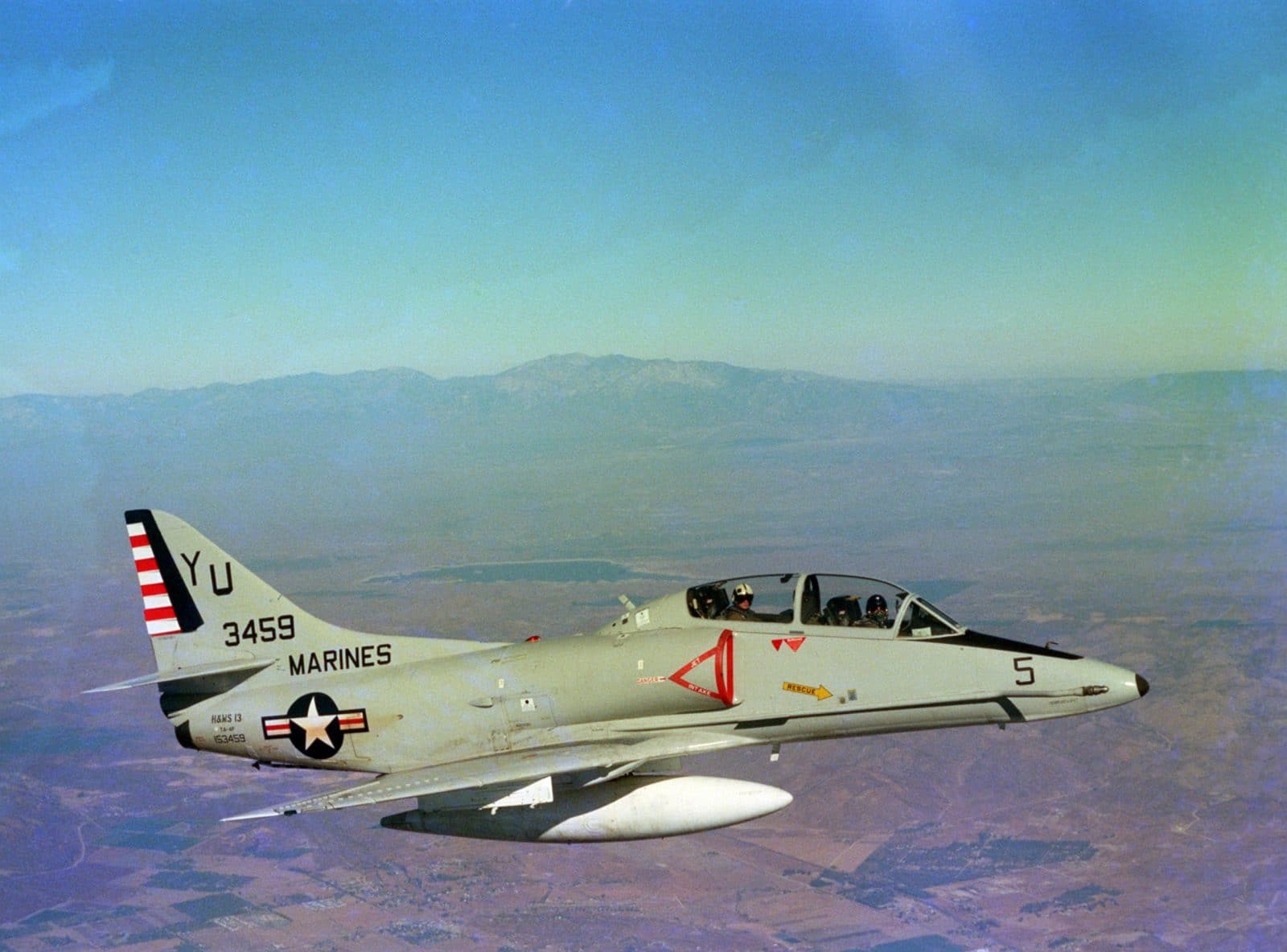
Double the Fun
To create a two-seat Skyhawk, Douglas built a 28-inch plug into the A-4E between the normal cockpit and the fuselage fuel tank, which was reduced in size somewhat to accommodate the change. Pratt & Whitney’s J52-P8A/P8B turbojet engine powered the TA-4F. The jet was also equipped with nosewheel steering, lift-improving wing spoilers, and a pair of Escapac 1C-3 ejection seats.
TA-4Fs began service with VA-125 Rough Raiders at NAS Lemoore in California in 1966. Some of them were modified with additional mission equipment and pressed into service as Marine Corps fast forward air controllers (FastFACs) in Vietnam. Four TA-4Fs were modified to carry electronic warfare equipment.
They served with Tactical Electronic Warfare Squadron THREE THREE (VAQ-33), also known as the Firebirds of the Fleet Electronic Warfare Support Group (FEWSG), as electronic aggressors under the designation EA-4F.
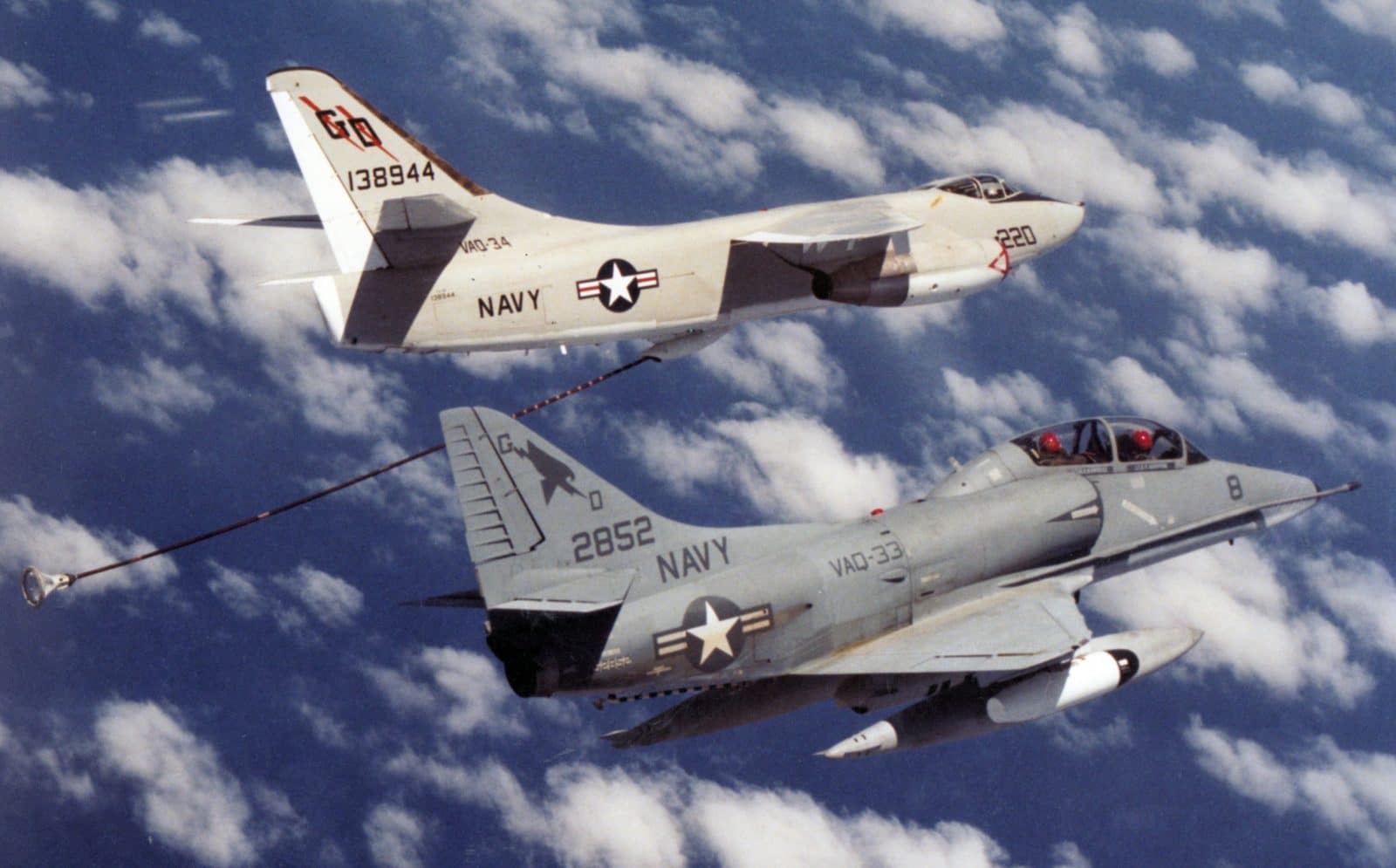
Earning Navy Wings of Gold
Thousands of student naval aviators finished their training flying TA-4J Skyhawk advanced jet trainers. The TA-4J was essentially a TA-4F without the weapons systems or the ability to carry a buddy pod for fuel transfer capability. The J model was powered by a less beefy but still spry J52-P6 engine.
The first TA-4Js entered service with Training Squadron TWO ONE (VT-21) Fighting Redhawks at NAS Kingsville in Texas during 1969. Subsequently, about 100 of the original TA-4Fs were modified to TA-4J specifications, although many of these aircraft retained their J52-P8A/P8B engines.
In addition to training student naval aviators, both TA-4Js and TA-4Fs flew with many of the same aggressor units as the single-seat Skyhawks did.
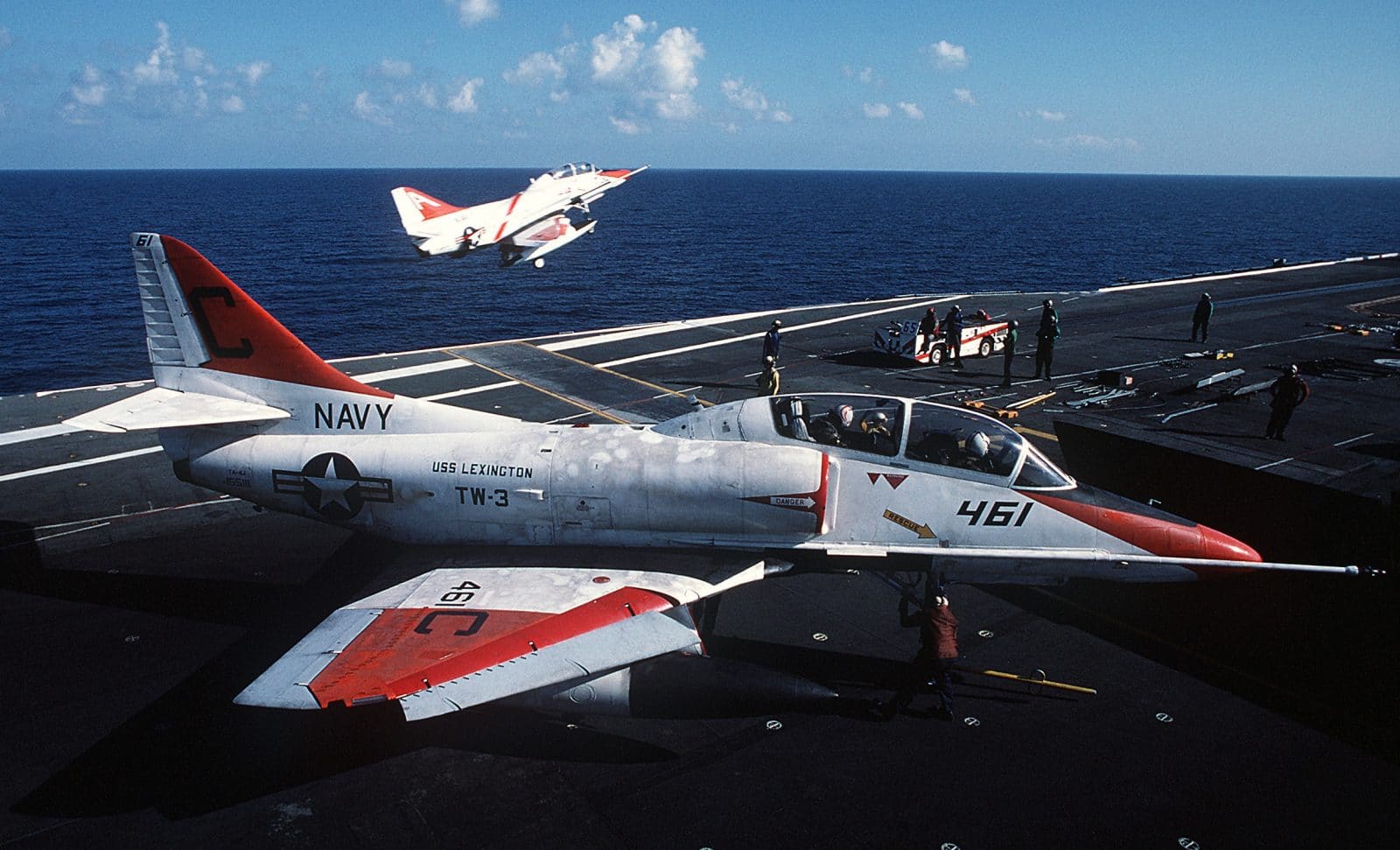
Marine Corps Two Seaters
23 TA-4Fs were reworked at Naval Air Rework Facility (NARF) Pensacola for the Marine Corps. The Leathernecks needed an updated FastFAC aircraft, and this new configuration was designated OA-4M. TA-4Fs were modified with the avionics and most of the mission equipment found in the A-4M. Originally, the OA-4M was to be powered by the P&W J52-P408, but it ended up being powered by the J52-P8A/P8B from the TA-4F instead.
The two-place OA-4Ms were humpbacked and sported the curved refueling probe first seen on the A-4F. OA-4Ms were operated primarily by Marine Corps Headquarters and Maintenance (H&MS) squadrons. Many were sold off to other governments when Marine Corps requirements changed and the Marines no longer needed them.
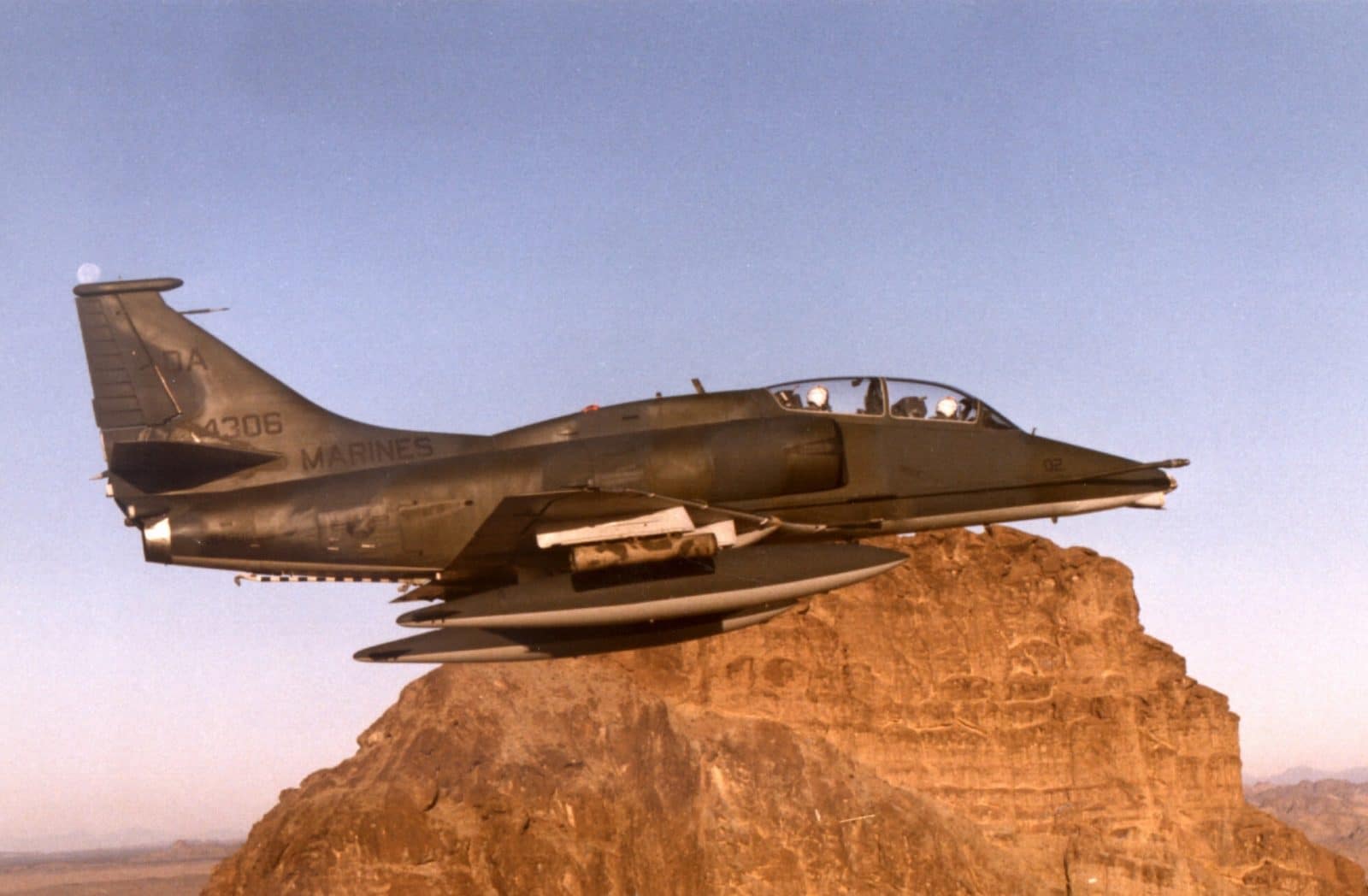
Every Good Thing Eventually Comes to an End
On 27 February 1979, 25 years of Skyhawk production came to an end when the US Navy accepted A-4M Bureau Number (BuNo) 160264 from McDonnell-Douglas. 2,960 Skyhawks had rolled off the line during that time.
The first squadron to fly the final Scooter off the line was VMA-331 Bumblebees. 160264 also spent time assigned to the Naval Air Test Center (NATC) at NAS Patuxent River in Maryland, as well as with VX-5 Vampires at NAWC China Lake in California, before retiring with VMA-124 Whistling Death at NAS Memphis.
The jet now resides at MCAS Miramar, wearing her final VMA-124 colors. VC-8 Redtails retired the last operational American Skyhawks during 2003.
But look on the bright side…there are more privately-owned civilian Scooters now than ever before!
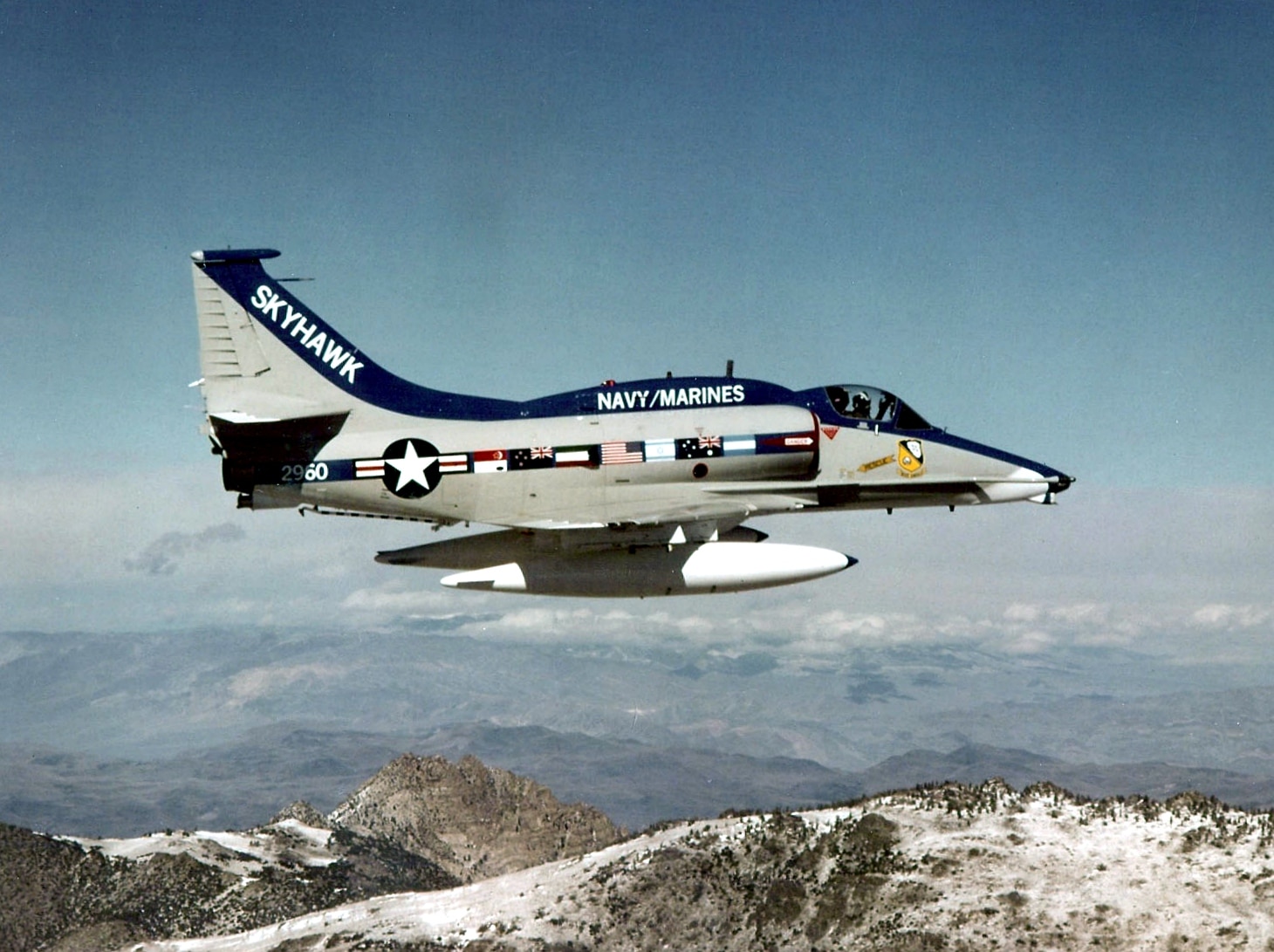

Used to great effect by the Argentinians in the Malvinas (Falklands) canpaign
Good article, but spoilers don’t increase lift, they kill lift. You must have been referring to the leading edge aerodynamic slats.
Just to share in the rich history of the A4 that I remembered when RSAF A-4SU Super Skyhawks made their “last flight” in Singapore on 31 March 2005.
https://acesflyinghigh.wordpress.com/2018/07/21/singapores-double-bubble-super-skyhawk/
https://military.wikia.org/wiki/ST_Aerospace_A-4SU_Super_Skyhawk
https://commons.wikimedia.org/wiki/Category:A-4SU_Super_Skyhawk
Was an A4 powerplant mechanic at Topgun, VMA 311, and was a hamster at MAG 13.
[…] the elite Navy and Marine Corps demonstration team has changed aircraft since it moved from the A-4F Skyhawk II to the Hornet back in […]
[…] When renowned aerospace designer Ed Heinemann of Douglas drew the A-4 Skyhawk, he would be replacing one of the largest single-engine propeller-driven fighter-bombers ever built with what turned out to be one of the smallest, lightest attack jets ever. Designed for reduced weight and complexity, his Hot Rod ended up with a delta wingspan so small (just a shade over 26 feet) that the A-4 never needed folding wings… read more > […]